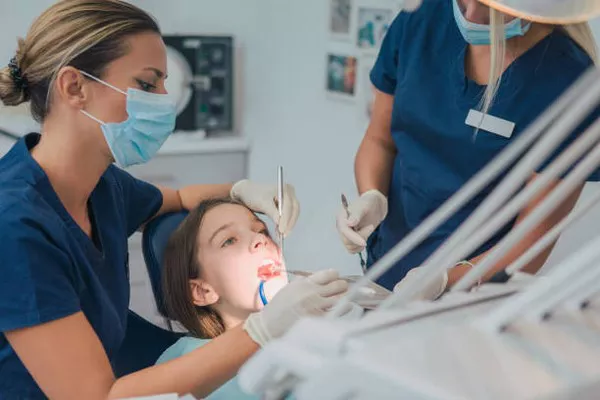Maintaining oral hygiene is crucial for overall health, and a significant aspect of this is regular dental cleanings. While brushing and flossing at home are essential components of dental care, they are not always sufficient to remove all plaque and tartar buildup. That’s where professional dental cleanings come in. In this comprehensive guide, we will delve into the intricacies of what a dental cleaning Includes, highlighting each step to provide a clear understanding of the process.
Assessing Oral Health
A dental cleaning typically begins with a thorough physical examination of the mouth by a trained dental hygienist. Using a small mirror, the hygienist inspects the teeth and gums meticulously, looking for any signs of gingivitis, cavities, or other concerns. This examination is crucial as it helps identify any underlying issues that may require further attention from the dentist. Early detection of problems allows for prompt treatment, preventing potential complications down the road.
Plaque and Tartar Removal
One of the primary objectives of a dental cleaning is the removal of plaque and tartar buildup from the teeth. Plaque is a sticky film of bacteria that forms on the teeth, primarily along the gum line and in hard-to-reach areas. If not removed, plaque can harden into tartar, which is a more stubborn and calcified form of dental plaque.
To tackle this buildup, the dental hygienist employs specialized tools, such as a scaler, to gently scrape away plaque and tartar from the surfaces of the teeth. This process targets the areas where plaque tends to accumulate, particularly around the gum line and between the teeth. By effectively removing plaque and tartar, the hygienist helps prevent gum disease and tooth decay, promoting optimal oral health.
It’s important to emphasize to patients the importance of regular brushing and flossing in preventing plaque buildup between dental cleanings. While professional cleanings are essential for removing stubborn tartar, daily oral hygiene practices play a crucial role in maintaining a healthy smile.
Toothpaste Cleaning
In addition to plaque and tartar removal, a dental cleaning may also involve toothpaste cleaning for a deeper clean. This step typically utilizes a high-powered electric brush and gritty toothpaste specially formulated for professional use. The abrasive nature of the toothpaste helps polish the teeth, removing surface stains and plaque that may have been missed during manual brushing.
The use of professional-grade toothpaste during a dental cleaning offers several benefits. Not only does it provide a thorough cleaning, but it also helps strengthen the enamel and promote overall oral health. Patients should be reassured that this toothpaste is safe for occasional use under the supervision of a dental professional, typically recommended twice a year during routine cleanings.
see also: Why are british teeth so yellow?
Expert Flossing
While many people are diligent about brushing their teeth, flossing is often overlooked. However, flossing plays a crucial role in removing food particles and plaque from between the teeth and along the gum line, where toothbrushes cannot reach effectively. During a dental cleaning, the hygienist performs expert flossing to ensure that every nook and cranny is thoroughly cleaned.
The benefits of professional flossing are manifold. Dental hygienists are trained to floss in a way that maximizes effectiveness while minimizing discomfort or irritation. They can reach deep between the teeth, identifying any potential trouble spots that may require additional attention. By incorporating expert flossing into the cleaning process, patients can achieve a higher level of oral hygiene and reduce their risk of gum disease and tooth decay.
Rinsing
Following the thorough cleaning process, it’s essential to rinse away any debris and residue from the teeth and gums. Dental hygienists typically use a rinse containing liquid fluoride, which helps strengthen the enamel and provides added protection against cavities. Fluoride is a naturally occurring mineral that remineralizes the teeth, making them more resistant to acid attacks from bacteria and acidic foods.
Rinsing with fluoride not only cleanses the mouth but also enhances the protective barrier of the teeth, reducing the risk of tooth decay. Patients should be encouraged to swish the fluoride rinse around their mouth for the recommended duration to ensure maximum effectiveness.
see also: yellow teeth & white teeth:What’s the Difference?
Fluoride Treatment
The final step of a dental cleaning often involves the application of a fluoride treatment to further safeguard against cavities. Fluoride treatments come in various forms, including gels, foams, or varnishes, and are applied directly to the teeth.
Fluoride works by remineralizing the enamel, strengthening it and making it more resistant to decay. This additional layer of protection can last for several months, providing long-term benefits for oral health. While fluoride treatments are particularly beneficial for children and individuals at higher risk of cavities, they are generally recommended for patients of all ages as part of a comprehensive preventive dental care regimen.
Conclusion
In conclusion, a dental cleaning is a multi-step process designed to promote optimal oral health and prevent common dental problems such as gum disease and tooth decay. From the initial physical examination to the application of fluoride treatment, each step plays a crucial role in maintaining a healthy smile.
By understanding what a dental cleaning entails and the importance of each component, patients can take proactive steps to prioritize their oral health. Regular dental cleanings, combined with consistent at-home oral hygiene practices, form the foundation for a lifetime of healthy teeth and gums.
Remember, prevention is key when it comes to dental care. By scheduling regular dental cleanings and adopting good oral hygiene habits, patients can enjoy a confident smile and improved overall well-being.
FAQs about Dental Cleaning
1. What is done during dental cleaning?
During a dental cleaning, also known as a dental prophylaxis, the following steps are typically performed:
Plaque and Tartar Removal: A dental hygienist or dentist uses specialized tools to remove plaque and tartar buildup from the surfaces of your teeth, including along the gumline and between teeth.
Scaling: Stubborn tartar deposits are gently scraped off the teeth using a scaler.
Polishing: The teeth are polished to remove surface stains and smooth out any rough areas.
Fluoride Treatment (Optional): Some cleanings may include the application of fluoride to strengthen the enamel and help prevent tooth decay.
Oral Examination: The dentist or hygienist will examine your teeth and gums for signs of dental issues such as cavities, gum disease, or oral cancer.
2. Is dental cleaning painful?
Dental cleaning is typically not painful, although some individuals may experience mild discomfort or sensitivity during certain parts of the procedure, especially if there is significant plaque and tartar buildup. However, dental professionals strive to ensure your comfort throughout the cleaning process. If you experience discomfort, inform your dentist or hygienist, who can adjust their approach or provide numbing options to minimize any pain.
3. Do dentists fill cavities during a cleaning?
Dentists may identify cavities during a dental cleaning, but they typically do not fill them during the cleaning appointment itself. Instead, they may schedule a separate appointment for cavity treatment, such as dental fillings. However, if a cavity is severe or causing discomfort, your dentist may discuss treatment options with you during the cleaning appointment and prioritize addressing the cavity sooner rather than later.
4. Does dental cleaning include flossing?
While dental cleaning typically involves scaling, polishing, and an oral examination, it may not always include flossing. However, some dental professionals may floss your teeth as part of the cleaning process, especially if they notice areas of plaque or debris between your teeth. Flossing helps remove plaque and food particles from between teeth and along the gumline, contributing to comprehensive oral hygiene. If you have specific preferences or concerns regarding flossing during your dental cleaning, you can discuss them with your dentist or hygienist.
You Might Be Interested In






























